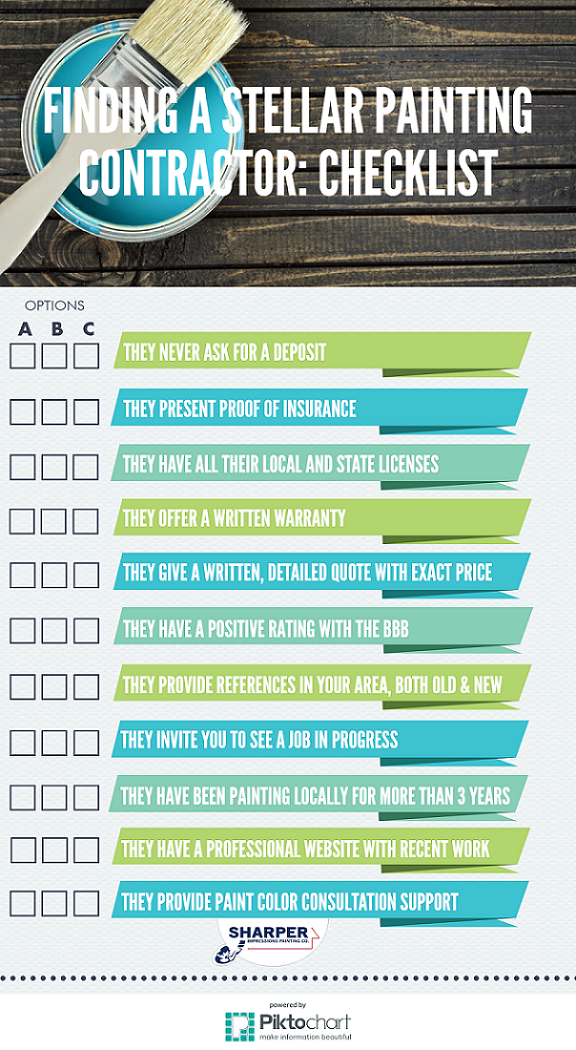Gain Understandings Into Just How Weather Can Impact The Outcome Of Your External Painting Job, Making Certain A Professional Coating
Gain Understandings Into Just How Weather Can Impact The Outcome Of Your External Painting Job, Making Certain A Professional Coating
Blog Article
Web Content By-Boyle Morin
Understanding how weather can affect the result of an external painting venture is extremely important for accomplishing a remarkable coating. From temperature level fluctuations altering paint bond to moisture levels affecting drying times, each element of weather plays a significant function in the success of your project. Furthermore, wind speed and precipitation can present unexpected difficulties that might endanger the high quality of the outcome. As we browse via the subtleties of climate's influence on outside paint, it comes to be evident that careful planning and strategic timing are vital for guaranteeing a specialist and long lasting end result.
Perfect Temperature Array for Painting
When taking into consideration external painting projects, the ideal temperature level variety plays a critical function in achieving optimum outcomes. Painting in the appropriate temperature conditions makes sure that the paint adheres appropriately to the surface area, dries out evenly, and cures effectively. Generally, the suggested temperature range for exterior paint is between 50 to 85 degrees Fahrenheit.
Paint in temperatures listed below 50 degrees Fahrenheit can result in concerns such as bad paint attachment, extended drying times, and an enhanced possibility of breaking or peeling.
On Residential Exterior Paint Ideas , painting in temperature levels above 85 levels Fahrenheit can cause the paint to dry too rapidly, causing blistering, bubbling, and an unequal surface.
To accomplish the most effective outcomes, it is essential to check the weather report before starting an outside painting task. Preferably, purpose to repaint during moderate climate condition with modest temperature levels and reduced moisture degrees.
Results of Humidity on Paint Drying
Humidity degrees substantially impact the drying procedure of paint put on exterior surface areas. High humidity can lengthen the drying out time of paint, bring about potential concerns such as trickling, streaking, or even the development of bubbles on the repainted surface. Excess wetness in the air reduces the dissipation of water from the paint, hindering the curing procedure. This is especially bothersome for water-based paints, as they depend on dissipation for drying out.
On simply click the up coming internet page , low humidity levels can additionally impact paint drying out. Very dry problems may trigger the paint to completely dry too quickly, causing poor bond and a rough coating. In such situations, adding a paint conditioner or spraying a fine mist of water in the air can aid regulate moisture levels and improve the paint outcome.
To guarantee ideal drying out problems, it is suggested to repaint when the moisture levels range between 40% and 50%.
Monitoring humidity levels and taking suitable measures can aid attain a smooth and sturdy paint finish on exterior surfaces.
Wind and Rainfall Considerations
Wind rate and precipitation are essential factors that considerably influence the success of an outside paint job.
When it comes to wind, both speed and instructions are essential factors to consider. High wind speeds can trigger paint to completely dry also promptly, causing a below average finish with potential issues like splitting or irregular texture. Additionally, wind can carry particles that might comply with the wet paint, bring about imperfections. Therefore, painters must aim to work with days with light to moderate winds for optimum painting conditions.
On the other hand, precipitation, whether rain or snow, can be extremely detrimental to the result of an outside painting project. Moisture from precipitation can hinder paint attachment, triggering peeling and bubbling over time. It is critical to stay clear of painting throughout rainy or snowy weather to make sure the long life and high quality of the paint task. Painters need to additionally enable ample time for the surface area to dry completely after any rainfall prior to beginning or returning to the painting process.
Conclusion
To conclude, weather play a significant role in the end result of an external paint job. The suitable temperature level variety, humidity levels, wind rate, and precipitation all add to the success or failure of the paint job.
It is important to consider these factors and strategy as necessary to ensure appropriate paint attachment, drying out times, and general high quality of the completed product.
